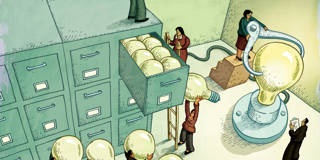The Future of Ideological Conflict
Some have argued that ideologies and parties are irrelevant in an increasingly fragmented political landscape. But one division that looms on the horizon could reinvent the right-left distinction for the twenty-first century: precautionary versus “proactionary” attitudes toward risk as principles of policymaking.
WARWICK – The just-concluded French presidential election seemed to suggest that the old left-right divisions are as potent as they have ever been – and certainly in their birthplace. But are they?
The modern political spectrum is an artifact of the seating arrangements at the French National Assembly after the revolution of 1789. To the right of the Assembly’s president sat the supporters of King and Church, while to the left sat their opponents, whose only point of agreement was the need for institutional reform. The distinction capitalized on long-standing cultural associations of right- and left-handedness with, respectively, trust and suspicion – in this case, of the status quo.
In retrospect, it is remarkable that this distinction managed to define partisan political allegiances for more than 200 years, absorbing both the great reactionary and radical movements of the nineteenth and twentieth centuries. But the decline in voter turnout in most of today’s democracies suggests that this way of conceptualizing ideological differences may have become obsolete. Some have even argued that ideologies and parties are irrelevant in an increasingly fragmented political landscape.



WARWICK – The just-concluded French presidential election seemed to suggest that the old left-right divisions are as potent as they have ever been – and certainly in their birthplace. But are they?
The modern political spectrum is an artifact of the seating arrangements at the French National Assembly after the revolution of 1789. To the right of the Assembly’s president sat the supporters of King and Church, while to the left sat their opponents, whose only point of agreement was the need for institutional reform. The distinction capitalized on long-standing cultural associations of right- and left-handedness with, respectively, trust and suspicion – in this case, of the status quo.
In retrospect, it is remarkable that this distinction managed to define partisan political allegiances for more than 200 years, absorbing both the great reactionary and radical movements of the nineteenth and twentieth centuries. But the decline in voter turnout in most of today’s democracies suggests that this way of conceptualizing ideological differences may have become obsolete. Some have even argued that ideologies and parties are irrelevant in an increasingly fragmented political landscape.